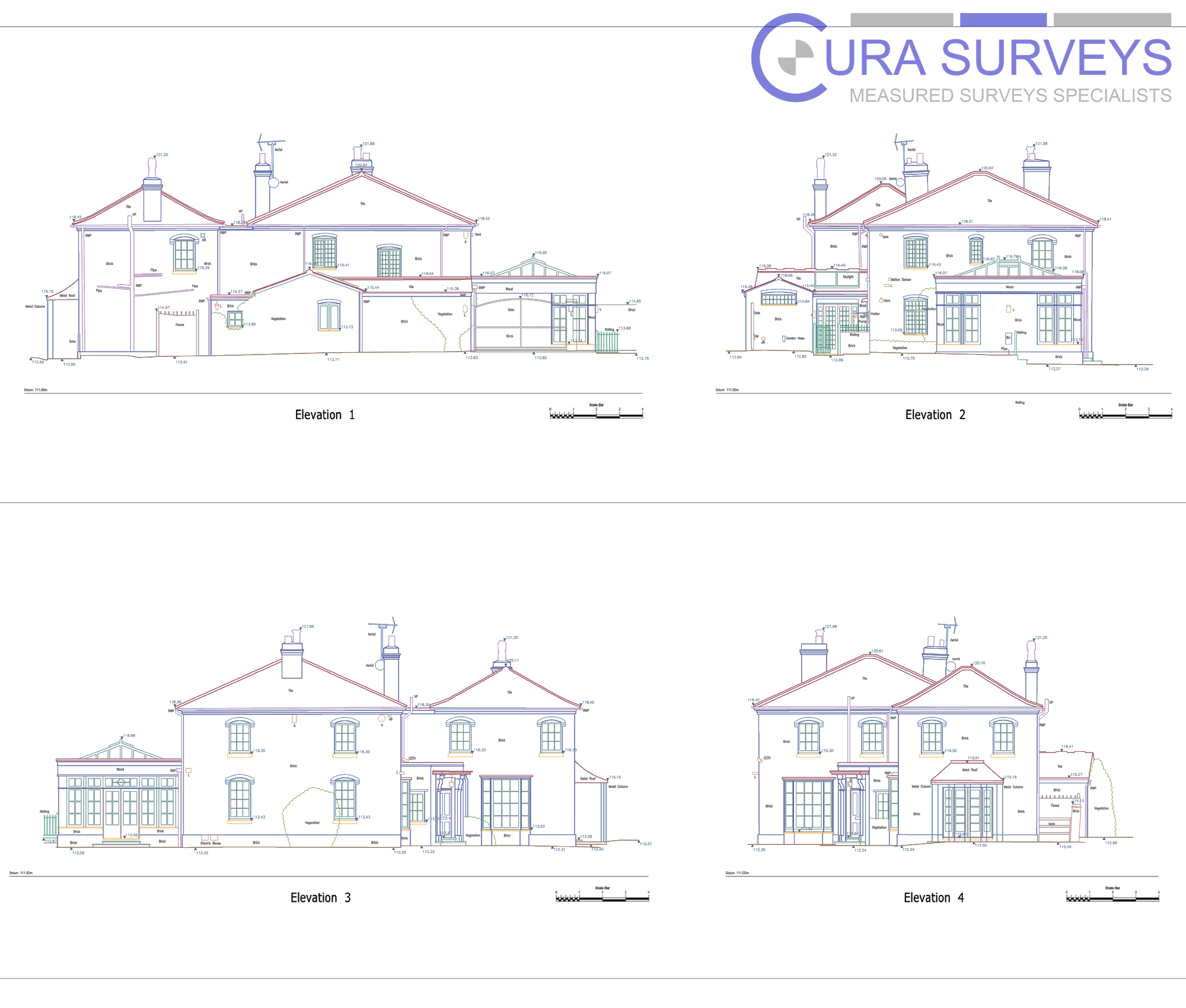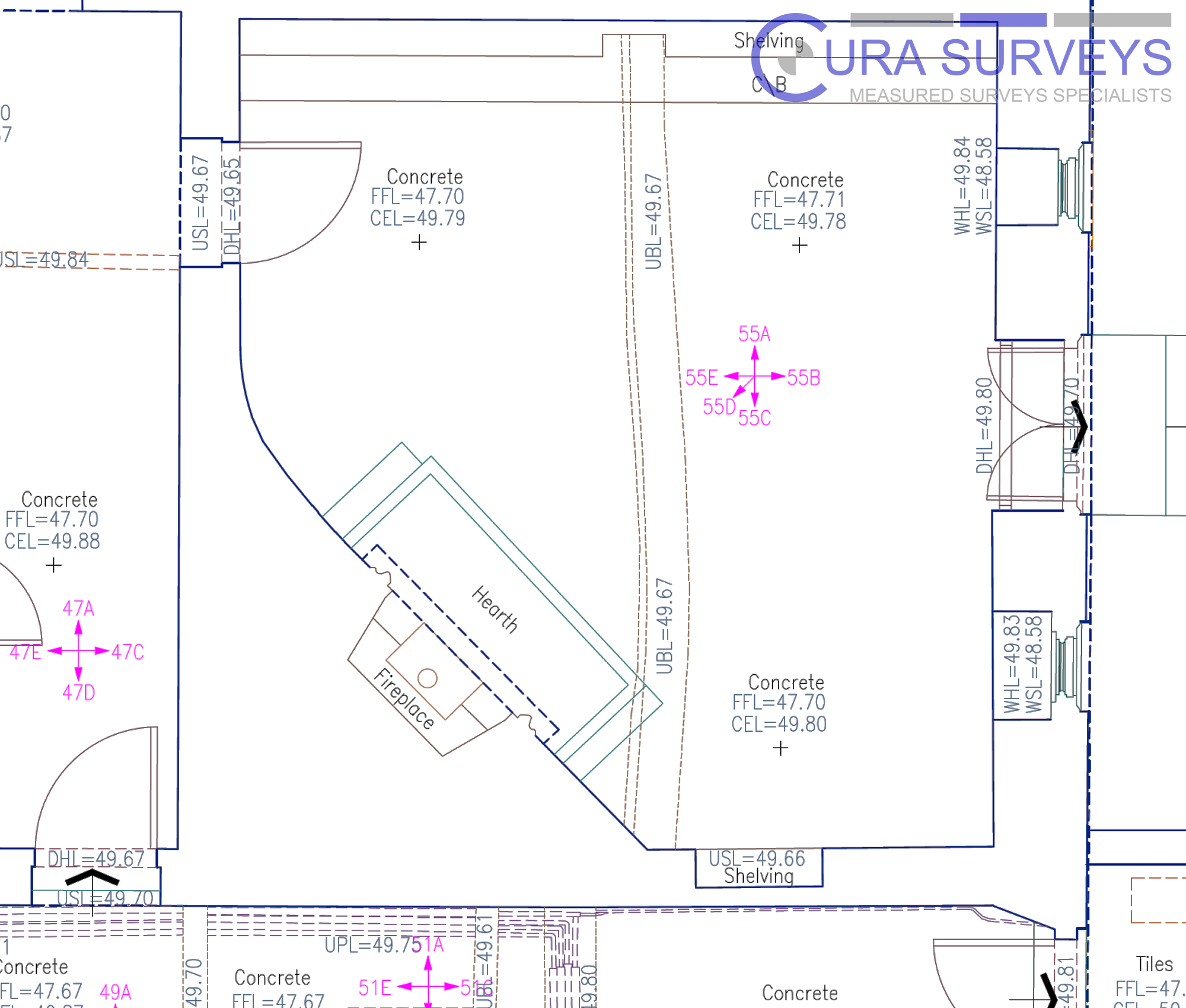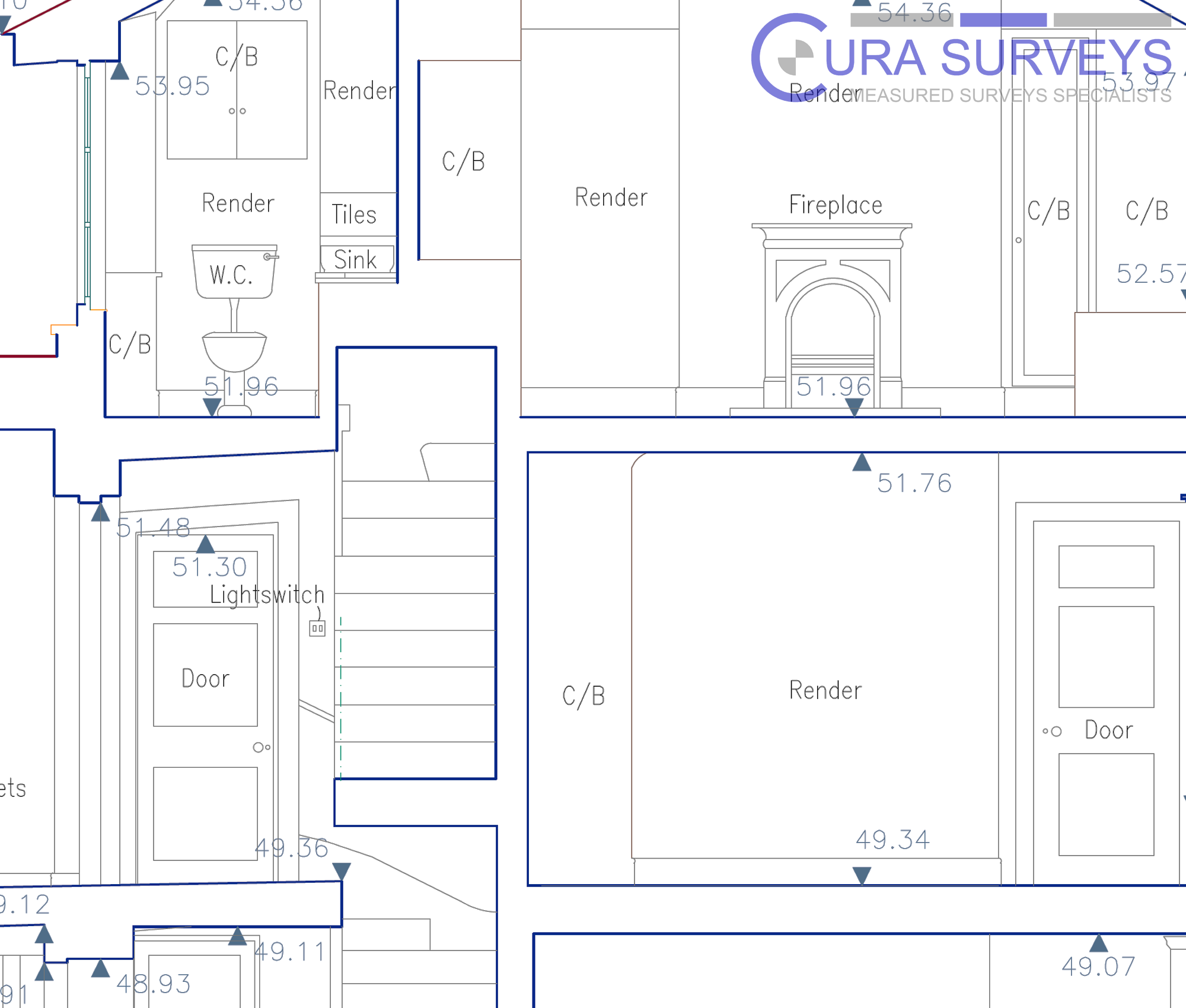What is a measured building survey?
A measured building survey is a comprehensive and detailed survey that captures precise measurements and documentation of the physical features, dimensions, and characteristics of a building. This survey provides accurate data on the existing condition and layout of a structure, including its architectural elements, internal and external spaces, and relevant building services. Measured building surveys are typically conducted by professional surveyors using various surveying techniques and instruments. Here are some key aspects of a measured building survey:
Purpose: The primary purpose of a measured building survey is to create a detailed record and representation of an existing building. It captures accurate measurements of the building’s layout, floor plans, elevations, sections, and key architectural features. This information serves as a valuable reference for various purposes, such as refurbishment, renovation, space planning, lease agreements, and historical preservation.
Data Collection Methods: Measured building surveys employ a range of surveying techniques and instruments to collect data accurately. These may include laser distance measurement devices, total stations, 3D laser scanners, photogrammetry, and digital imaging. The chosen methods depend on the complexity and size of the building, as well as the level of detail required.
Floor Plans and Elevations: Measured building surveys produce detailed floor plans that accurately represent the dimensions, layout, and configuration of each floor within a building. These plans typically show the position of walls, doors, windows, and major building services. Elevations, which depict the external facades of the building, are also recorded to capture the architectural characteristics and external features.
3D Models and Point Cloud Data: Advanced surveying techniques, such as laser scanning, can generate three-dimensional (3D) models and point cloud data. Laser scanners capture millions of individual points in a building, creating a highly detailed representation of its surfaces and features. This data can be used to visualise the building in a virtual environment, perform accurate measurements, and create 3D models for visualisation or analysis purposes.
Structural and Services Information: Measured building surveys can include additional data related to the structural elements of the building, such as beam and column positions, floor heights, and roof details. The survey may also capture information about building services, including the location of electrical systems, plumbing, HVAC (heating, ventilation, and air conditioning), and fire protection equipment.
Accuracy and Precision: Measured building surveys aim to achieve a high level of accuracy and precision. Surveyors use precise measurement techniques and instruments to ensure the recorded data is as accurate as possible. This accuracy is crucial for design, planning, and construction activities, as well as for ensuring that any proposed changes or additions to the building align with its existing condition.
In summary, a measured building survey provides a comprehensive and accurate record of the physical features, dimensions, and characteristics of an existing building. This data is essential for a range of purposes, including design, planning, refurbishment, and historical preservation, ensuring that future activities are based on a detailed understanding of the building’s current condition.
Call us on 0203 488 5858 or email info@curasurveys.co.uk with any questions or to get a quote.
Why use Cura Surveys for your measured building survey?
Why is a measured building survey important?
A measured building survey holds significant importance in various aspects of construction, design, and property management. Here are some key reasons highlighting the importance of a measured building survey:
Accurate Record of Existing Conditions: A measured building survey provides an accurate and detailed record of the current condition and layout of a building. It captures precise measurements of the building’s dimensions, architectural features, and spatial relationships. This information serves as a baseline reference for future activities, ensuring that any proposed changes or modifications align with the existing structure.
Design and Planning: A measured building survey is essential during the design and planning stages of construction or renovation projects. The detailed data captured in the survey allows architects, engineers, and designers to work with accurate information about the building’s layout, structural elements, and services. It facilitates informed decision-making, enabling efficient space planning, optimisation of design solutions, and identification of potential design constraints.
Refurbishment and Renovation: When refurbishing or renovating a building, a measured survey is crucial. It provides a comprehensive understanding of the existing conditions, highlighting any areas that require repair, modification, or improvement. The accurate measurements and documentation obtained from the survey help ensure that refurbishment efforts are aligned with the building’s original features and comply with regulations.
Space Utilisation and Management: Measured building surveys play a vital role in optimising space utilisation and management. The detailed floor plans and spatial data obtained from the survey help property owners and facility managers assess the functionality and efficiency of a building’s layout. This information can inform decisions on space allocation, reconfiguration, and lease agreements, maximising the potential of the property.
Historical Preservation: In the context of historical buildings or heritage sites, a measured building survey is of particular importance. It provides a detailed record of the building’s historical features, architectural elements, and materials. This information is invaluable for conservation and restoration efforts, ensuring that any interventions are carried out with respect to the building’s heritage value and in accordance with preservation guidelines.
Due Diligence and Property Transactions: Measured building surveys are often required during property transactions and due diligence processes. Potential buyers, investors, or tenants can rely on the accurate data obtained from the survey to assess the condition, suitability, and potential of a property. It helps identify any structural issues, space limitations, or necessary repairs, enabling informed decision-making and minimising risks associated with property transactions.
Compliance and Regulations: A measured building survey aids in ensuring compliance with building regulations and codes. The survey data assists in verifying adherence to structural and safety standards, accessibility requirements, and fire safety regulations. It helps identify any non-compliance issues, enabling timely rectification and ensuring the building meets necessary legal and safety standards.
In summary, a measured building survey provides a crucial foundation of accurate data for various aspects of construction, design, and property management. Its importance lies in capturing the existing conditions of a building, facilitating informed decision-making, optimising space utilisation, preserving heritage, supporting property transactions, and ensuring compliance with regulations. A measured building survey is an essential tool for professionals involved in the built environment to make informed and effective decisions throughout the lifecycle of a building.






